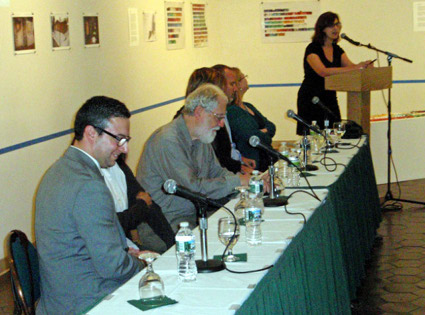Brooklyn under water: Conference debates environmental threat

P9120720_edited-1.jpg
The Times pointed out the problem last Tuesday. On Wednesday, Brooklyn searched for answers. Will Brooklyn be swamped by a 100-year flood?
The answer is yes. Not only Brooklyn but also Queens and Staten Island. When? We don’t know.
A panel held at Kingsborough Community College Wednesday evening voiced its opinion in the college’s art gallery surrounded by pictures and maps from “Brooklyn’s Waterfronts: Past, Present, Future.” Sponsored by the Brooklyn Waterfront Research Center, the discussion drew an audience of over 100 to hear the six panelists reveal their opinions of Brooklyn at risk from climate change.